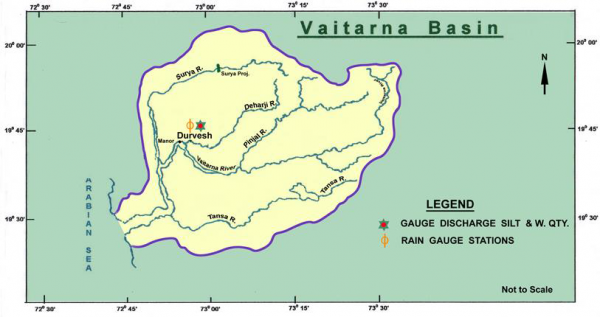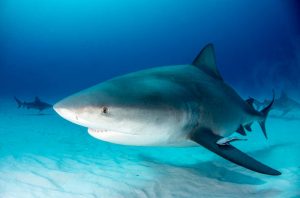ForumIAS announcing GS Foundation Program for UPSC CSE 2025-26 from 19 April. Click Here for more information.
ForumIAS Answer Writing Focus Group (AWFG) for Mains 2024 commencing from 24th June 2024. The Entrance Test for the program will be held on 28th April 2024 at 9 AM. To know more about the program visit: https://forumias.com/blog/awfg2024
Source-This post on Vaitarna River has been created based on the article “Bull shark that attacked fisherman was first sighting in Vaitarna river” published in “Hindustan Times” on 19 February 2024.
Why in the news?
A fisherman from Maharashtra’s Palghar district was attacked by a bull shark in the Vaitarna river.
About Vaitarna River

Origin– The river rises in the Sahyadri hill range in the Nasik district of Maharashtra State.
Mouth– It drains into the Arabian Sea near Mumbai.
Tributary– Left bank tributary-Tanya
Right bank tributaries- Pinjal, Dehraja, and Surya
Significance– The Vaitarna supplies much of Mumbai’s drinking water. It is the largest river in the Northern Konkan region and drains Maharashtra’s whole Palghar district.
West flowing river– It is one of the west flowing rivers in the region North of Mumbai and South of the Tapi river.
Threats– The Vaitarna is one of the most polluted rivers in India.
About Bull shark

| Aspect | Details |
| Description | The name “bull shark” comes from the shark’s stocky shape, broad, flat snout, and aggressive, unpredictable behaviour It is also known as the Zambezi shark in Africa and the Lake Nicaragua shark in Nicaragua. |
| Habitat | It is commonly found worldwide in warm, shallow waters along coasts and in rivers. |
| Characteristics | 1) Bull sharks are euryhaline and can thrive in both salt and fresh water. NOTE- Euryhaline- Ablility to live in waters of a wide range of salinity. 2) Despite their ability to survive in freshwater habitats, they can not be categorised as true freshwater sharks. 3) It has the unique ability to inhabit fresh, saline, and brackish waters. 4) It is known for its adaptability. It can be found far upstream in several major rivers worldwide. |
| Threat to humans | It is considered particularly dangerous to humans due to its large size, freshwater presence, and proximity to human populations. It is often considered the most dangerous shark species. |
| Conservation | IUCN Status-Vulnerable |
Read more about-Conservation Initiatives for Sharks in India
UPSC Syllabus-Geography in news & Environment (Species in news)




